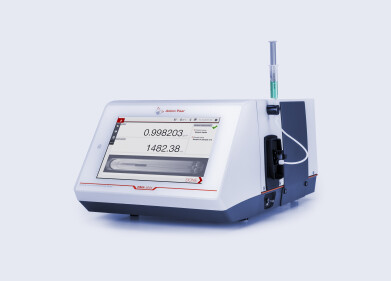Laboratory Products
Can Harvard's Robot Suit Help Stroke Patients Walk Again?
Dec 30 2016
It’s no secret that robots are the future. Now, a team of scientists from Harvard University is proving the point with a cutting-edge ‘soft robotics’ research project that aims to help stroke victims walk again.
Led by Conor Walsh, the Harvard Biodesign Lab team is revolutionising the concept of ‘soft robotics.’ Armed with mannequins, fabric, power packs and bicycle cables, the scientists fashion intelligent clothing that empowers stroke victims with heightened mobility, and newfound independence.
Redefining ‘power-dressing’
Already, Walsh and his team have gained international recognition for their efforts. This includes a recent Rolex research grant worth £82,000, which will be used to expand the Harvard ‘soft robotics’ enterprise and fast-track the development of full body suits. These are referred to as exoskeletons, and are essentially fitted shells that help wearers walk, move and complete day-to-day tasks.
“Essentially, we are making clothing that will give power to people who have suffered mobility impairment and help them move,” says Professor Walsh, head of the Harvard Biodesign Lab. “It will help them lift their feet and walk again. It is the ultimate in power-dressing.”
Fashioning full body ‘exosuits’
Not only will the suits be used to support stroke victims and those suffering from disabilities such as Parkinson’s disease and cerebral palsy, but they could also enhance the physical ability of manual workers and soldiers.
For those likening the concept to a sci-fi movie, the comparison isn’t all that farfetched. Walsh admits that he drew inspiration from Hollywood blockbusters like Iron Man and Alien, recalling “I thought that it all looked really, really cool.” However, after working on rigid exoskeletons he quickly realised that they didn’t offer wearers superlative comfort, or flexibility.
“It was like being inside a robotic suit of armour. It was hard, uncomfortable and ponderous and the suit didn’t always move the way a human would,” he says.
Blending form and function
So, he set up the Harvard Biodesign Lab and took a different approach to creating robotic exoskeletons. “I saw immediately that if you had a softer suit that accentuated the right actions, was comfy to wear and didn’t encumber you, it could have huge biomedical applications,” he explains. “I began to wonder: can we make wearable robots soft?”
It turns out, the answer is yes. Drawing on elements of electronics, mechanical engineering, materials science and neurology, Walsh and his team created a soft exosuit. The suit is anchored by a band of material wrapped around the calf muscles, and attached to pulleys made from bicycle brake cables. These are then fitted to a power pack worn on the back. When the wearer lifts their leg to take a step, the power pack actively pulls the cables to assist the movement. Simultaneously, ultra-sensitive inbuilt inertial measurement units (IMUs) read the forces created by the moving foot, and raise or lower the brake-cable pulleys accordingly. Additional cables are also attached to the toecaps of the wearer’s shoes, which tighten as the feet swing forward. This raises the toes, which prevents drag as the legs move.
“Designing robotic devices that target specific joints just hadn’t been done before,” says Walsh. “People had only looked at constructing a full-leg exoskeleton. We are targeting just one joint, not a whole leg. Crucially, in the case of strokes, it is the one that is often most badly impaired.”
With around 110,000 Brits suffering from a stroke every year, the exosuit has the power to change lives.
From robotics to thermal imaging, new technologies are continually revolutionising modern medicine. ‘Thermal Cameras Help to Reduce the Invasiveness of Cochlear Implant Surgery’ spotlights the latest technology from FLIR Systems, which has made cochlear implant process safer, and less invasive.
Digital Edition
International Labmate 49.6 - Sept 2024
September 2024
Chromatography Articles - HPLC gradient validation using non-invasive flowmeters Mass Spectrometry & Spectroscopy Articles - From R&D to QC, making NMR accessible for everyone: Putting NMR...
View all digital editions
Events
Oct 15 2024 Milan, Italy
Oct 17 2024 Dhaka, Bangladesh
Oct 20 2024 Fort Worth, TX, USA
Oct 21 2024 Dalian, China
Oct 30 2024 Birmingham, UK







.jpg)











